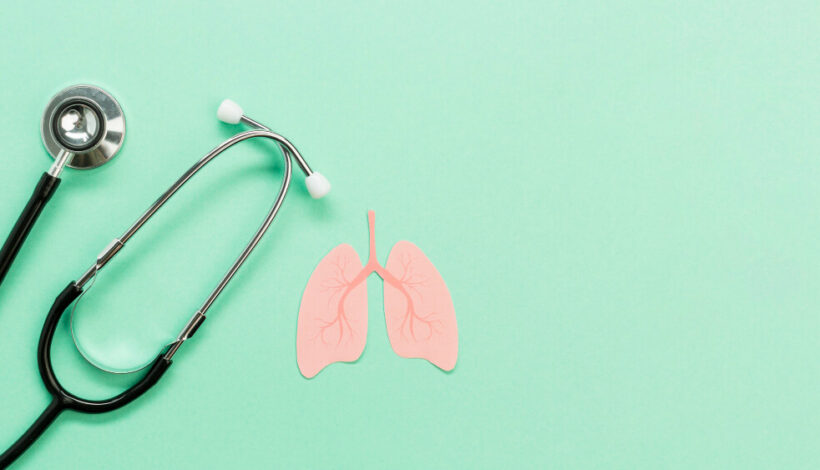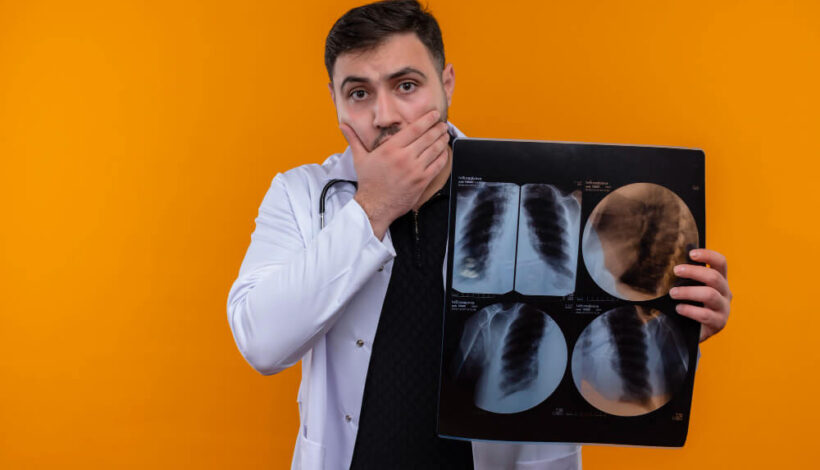Hyperinflated lungs, a condition characterized by increased lung volume and expanded alveolar spaces, can pose significant challenges to respiratory function and overall lung health. As a renowned interventional chest physician with over 25 years of specialized practice in respiratory medicine, infectious diseases, and tuberculosis, Dr. Kumar Doshi offers invaluable insights into hyperinflated lungs, its causes, symptoms, diagnosis, and treatment options. In this comprehensive article, we delve into understanding hyperinflated lungs and Dr. Doshi’s expert guidance on managing this condition effectively.
What Are Hyperinflated Lungs?
Hyperinflated lungs refer to a condition where the lungs become overinflated, leading to increased lung volume, reduced lung elasticity, and expanded alveolar spaces. Dr. Doshi explains that hyperinflation can impair respiratory function, compromise gas exchange, and exacerbate respiratory symptoms, such as shortness of breath, wheezing, and chest discomfort, affecting overall lung health and quality of life.
Causes of Hyperinflated Lungs
- Chronic Obstructive Pulmonary Disease (COPD): Hyperinflated lungs are commonly associated with COPD, a progressive lung disease characterized by chronic bronchitis and emphysema, leading to airway obstruction, reduced lung elasticity, and increased residual volume. Dr. Doshi emphasizes the importance of early diagnosis, comprehensive management, and effective treatment strategies to control symptoms, slow disease progression, and improve lung function in patients with COPD.
- Asthma: Severe asthma attacks and uncontrolled asthma can cause air trapping, increased residual volume, and hyperinflated lungs. Dr. Doshi recommends optimizing asthma management, adhering to treatment regimens, and monitoring respiratory symptoms to prevent exacerbations, improve lung function, and maintain optimal asthma control.
- Other Respiratory Conditions: Hyperinflated lungs can also be associated with other respiratory conditions, such as bronchiectasis, cystic fibrosis, interstitial lung diseases, and lung infections, leading to airway inflammation, mucus production, air trapping, and increased lung volume. Dr. Doshi underscores the importance of identifying underlying causes, implementing targeted treatments, and managing coexisting respiratory conditions to alleviate symptoms, improve lung function, and support respiratory well-being.
Symptoms of Hyperinflated Lungs
- Shortness of Breath: Difficulty breathing, increased respiratory effort, and shortness of breath, especially during physical exertion or activity, are common symptoms of hyperinflated lungs. Dr. Doshi emphasizes the importance of recognizing respiratory symptoms, monitoring breathing patterns, and seeking medical evaluation to identify underlying causes, assess lung function, and implement appropriate treatment strategies.
- Wheezing and Chest Discomfort: Wheezing, chest tightness, discomfort, and respiratory distress can occur due to air trapping, reduced lung elasticity, and impaired gas exchange in hyperinflated lungs. Dr. Doshi recommends using bronchodilators, anti-inflammatory medications, and respiratory therapies to alleviate symptoms, improve lung function, and enhance respiratory comfort.
- Decreased Exercise Tolerance: Reduced exercise tolerance, fatigue, and diminished physical endurance can result from impaired lung function, reduced oxygen exchange, and increased respiratory effort in hyperinflated lungs. Dr. Doshi underscores the importance of practising regular exercise, pulmonary rehabilitation, and respiratory muscle training to improve cardiovascular fitness, enhance exercise capacity, and support overall respiratory health.
Diagnosis and Treatment Options
- Pulmonary Function Tests (PFTs): Dr. Doshi emphasizes the importance of performing pulmonary function tests, including spirometry, lung volume measurements, and diffusion capacity tests, to assess lung function, diagnose hyperinflated lungs, and monitor respiratory status.
- Imaging Studies: Chest X-rays, CT scans, and imaging studies can provide detailed images of lung anatomy, identify hyperinflated areas, assess lung volume, and evaluate underlying lung conditions, such as COPD, emphysema, and asthma, guiding diagnosis and treatment planning.
- Treatment Strategies: Dr. Doshi recommends implementing personalized treatment strategies, including bronchodilators, inhaled corticosteroids, oxygen therapy, respiratory therapies, pulmonary rehabilitation, and lifestyle modifications, to manage symptoms, improve lung function, optimize respiratory health, and enhance the quality of life in patients with hyperinflated lungs.
Conclusion
Understanding hyperinflated lungs, recognizing symptoms, identifying underlying causes, and implementing targeted treatment strategies are essential for managing this condition effectively, improving lung function, alleviating symptoms, and enhancing overall respiratory well-being. Dr. Kumar Doshi’s extensive experience as an interventional chest physician underscores the significance of early diagnosis, comprehensive management, and personalized treatment approaches to support lung health, optimize respiratory function, and ensure long-term respiratory health and vitality.
By understanding hyperinflated lungs, seeking expert guidance, following personalized treatment regimens, practising healthy lifestyle habits, and embracing proactive respiratory care, you can take proactive steps to protect, support, and optimize lung function, ensuring optimal respiratory health, vitality, and quality of life.




